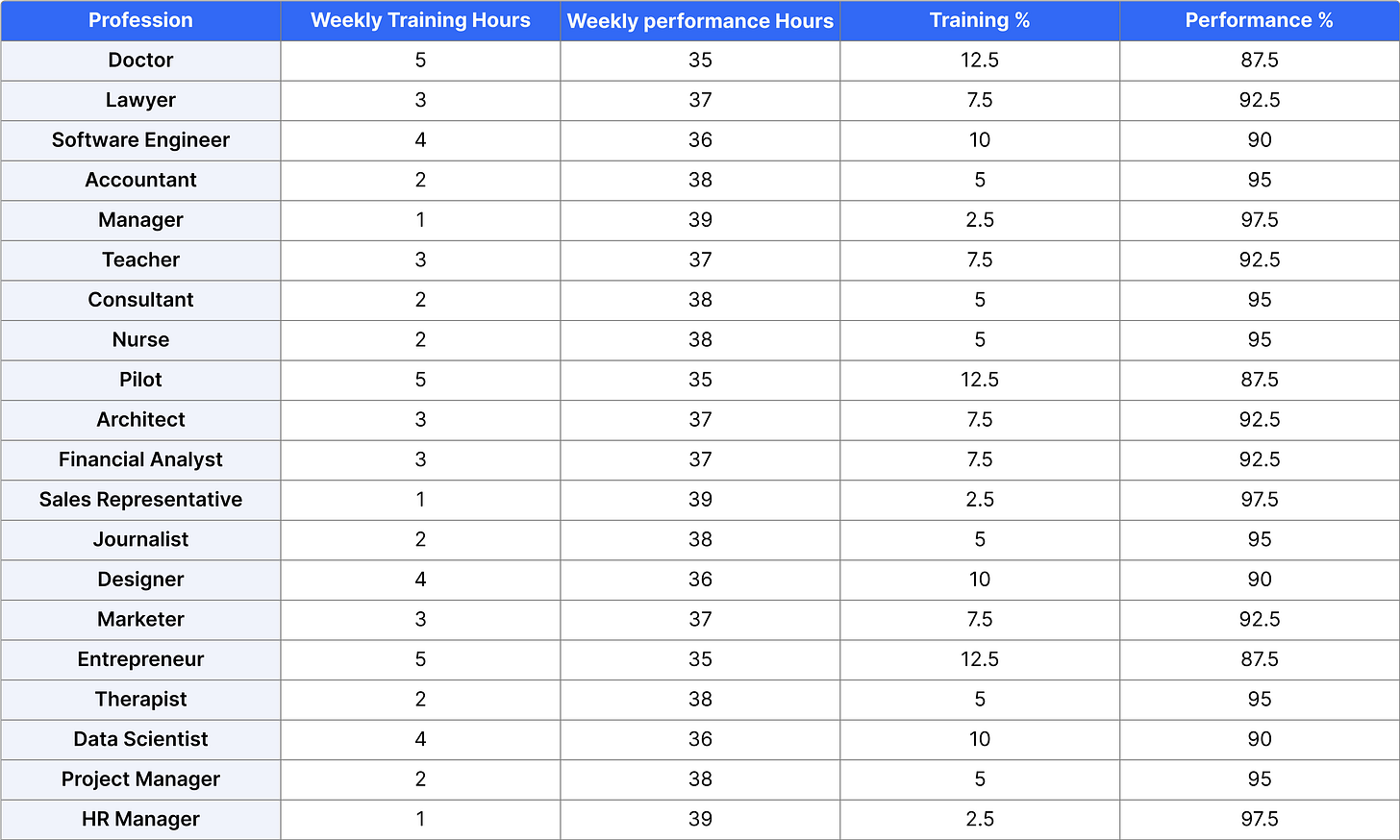I recently saw this image and it reminded me of a book I read many years ago by Stephen Coveney, The Seven Habits of Highly Effective People.
One of the habits is sharpening the saw. The image immediately reminded me of the contrast between corporate professionals and sports professionals.
Sports people spend the vast majority of their time practicing, getting better, reflecting, strategizing, and sharpening the saw. Whereas in the business world, we tend to spend the vast majority of our time in execution mode. And naturally, even though the context of the two worlds is somewhat different, naturally spending that amount of time in execution mode is going to give you a very blunt saw.
Personally for me, the challenge early in my career was actually understanding what my saw was. I really didn't know which direction I was heading in. Eventually I realized my saw is what I do now. Coaching, bringing new ideas to life & innovation. Once I realized that was my saw, I still found it hard to find the time to sharpen my saw. It's something I'm constantly thinking about, constantly trying to get better at.
I did a quick and dirty analysis of the amount of time the top 20 professional sports in the world spend training versus performing
Training vs. Performance Time by Sport
As you can see, athletes typically spend 85–93% of their time sharpening their saw practicing, drilling, conditioning, game‐planning, while only 7–17% is actual competitive performance.
Key takeaways:
High training ratios: Team sports like soccer (92.6%), basketball (91.7%), and field hockey (90.9%) show huge emphasis on preparation versus game time.
This contrast underscores the point, business professionals often flip straight into execution, whereas top athletes dedicate most of their time to refining skills, strategy, and recovery.
Training vs. Performance Time by Profession
Key takeaways:
Even in professions with mandatory continuing education (doctors, pilots), training rarely exceeds ~12–13% of the work week.
Knowledge‐intensive roles (software engineers, data scientists, designers) set aside ~10% for skill sharpening, but execution still dominates.
Management/leadership roles (managers, sales reps, HR) often have the lowest dedicated training time.
Compared to top pro athletes investing 85–93% of their time in training, most professionals allocate <15% to sharpening their saw. This highlights a huge opportunity to re-balance and prioritize ongoing development.
“So what would a corporate world with more time devoted to sharpening the saw look like? “
Shifting the typical corporate workweek from something like 10–15% “sharpening the saw” up to a 50/50 split of training (practice, skill-building, reflection) and execution would be a seismic change. Here’s how it would likely ripple through an organization:
1. Productivity & Performance
Short-term dip, long-term gain: In the first few months, you’d probably see a drop in output as people step away from “real work” into training. But by 6–12 months, productivity per hour worked should climb as employees master new tools, streamline processes, and avoid common pitfalls.
Error reduction: More frequent rehearsal of workflows and “battle drills” for critical tasks cuts down mistakes, rework and quality issues potentially reducing error rates by 20–30% over a year.
2. Innovation & Adaptability
Idea generation explosion: A culture that formally carves out “play” time for experimentation tends to surface more breakthrough ideas. Google’s old 20% time famously birthed Gmail; setting aside half your week could yield a pipeline of internal product and process innovations.
Faster learning curves: When emerging technologies or market shifts hit, teams accustomed to dedicated practice cycles can up-skill in weeks instead of months, turning change from a threat into an opportunity.
3. Employee Engagement & Retention
Higher job satisfaction: Investing in people’s growth signals you value them, boosting morale and loyalty. Gallup data shows that employees who feel their development is supported are up to 59% less likely to look for a new job.
Talent magnetism: A reputation as a learning organization helps recruit top talent who prize continuous development crucial in tight labor markets for tech, finance, healthcare, etc.
4. Leadership Pipeline & Succession
Stronger bench: Junior and mid-level staff get more runway to stretch and lead in low-risk “labs” before taking on high-stakes roles, reducing failure rates for new managers.
Distributed decision-making: As more people train and practice critical thinking, decision authority can decentralize, letting front-line teams act faster without constant escalation.
5. Financial ROI (Return on Investment)
Cost vs. yield: Training time has an up-front cost (salaries during training, course fees, tooling), but typical corporate L&D ROI studies show a 200–300% return over 1–2 years from increased sales, efficiency gains, and reduced turnover.
Opportunity cost management: Balanced right, the opportunity cost of pulled-away execution hours is offset by the compounding gains in innovation, lower attrition, and higher margins.
6. Cultural Transformation
Learning mindset: When half your time is non-urgent yet deliberate practice, the default mental model shifts from “fire-fighting” to “continuous improvement.”
Psychological safety: Regular practice slots create low-stakes environments where real feedback flows, building trust and enabling people to surface problems earlier.
If you are looking to shift your company out of “fire-fighting” mode and would like a L&D ROI of 200–300% return over 1–2 years, then give us a call.
Got a moment? Let us know how we did with a quick star rating!






